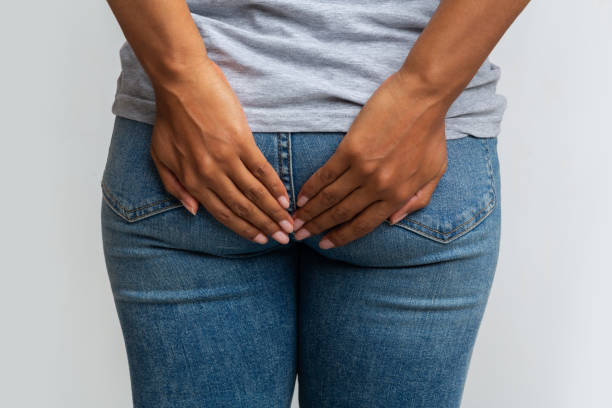
Hemorrhoids can be a pain in the butt, literally! Studies show that 1 out of 20 Americans deal with hemorrhoids, and up to 50% of individuals over age 50 will experience them.
If you have experienced hemorrhoids, or have heard the horror stories, knowing how to avoid them may be high on your list.
What are Hemorrhoids & What Do They Look Like?
First, what are hemorrhoids? They are swollen veins, similar to varicose veins, that are in the anus and lower rectum. They may cause bleeding and discomfort.
RELATED: Natural Ways To Avoid & Relieve Irregularity
Types of Hemorrhoids?
Two types of hemorrhoids are internal – inside the rectum – and external – around the anus.
Internal hemorrhoids are often asymptomatic (showing no symptoms) and may go unnoticed, as they tend to resolve on their own.
If there is discomfort or any sign of symptoms, it is most likely due to the size of the internal hemorrhoids.
When the internal hemorrhoids are prolapsed or protruding, they appear as red, swollen bumps or lumps that come out of the anus.
They are classified on a scale of Grade 1 through 4:
- Grade 1 – No prolapse
- Grade 2 – Prolapse with pressure
- Grade 3 – A prolapse that can be pushed back in
- Grade 4 – A prolapse that is too painful to be pushed back in
External hemorrhoids are on the anus whether as visible or palpable lumps. They can be a problem until they are resolved.
What Causes Hemorrhoids?
Hemorrhoids are connected to chronic constipation, prolonged time sitting on the toilet, and straining during bowel movements.
All of these causes can interfere with blood flow to the area, which causes the blood to pool and enlarge the vessels.
Hemorrhoid Symptoms
The symptoms of hemorrhoids may differ depending on the type. Besides the protrusion, there may not be other symptoms including burning, discomfort, itchiness, or pain depending on the situation.
With thrombosed hemorrhoids, which can be internal or external, a thrombosis – or blood clot – develops. The symptoms include intense burning, itching, pain, redness, and swelling.
Do Hemorrhoids Go Away?
Yes, hemorrhoids can go away. Ways to get rid of them include:
- An over-the-counter cream or suppository containing hydrocortisone
- Pads containing a numbing agent or witch hazel
- Soaking in a sitz - hip - or warm bath; soak your anal area in warm water two to three times per day for 10-15 minutes
RELATED: 5 Reasons to Fill Up On Fiber
5 Foods to Avoid with Hemorrhoids
Food that has little fiber can contribute to hemorrhoids by causing or making constipation worse, so be mindful of the foods you should avoid. They include:
- Dairy such as cheese and milk
- Processed foods such as fast food and frozen meats
- Meat
- Salt (which leads to more water in the body that can put pressure on the blood vessels)
- White bread and bagels
Iron supplements may also contribute to hemorrhoids due to increasing chances of constipation.
Hemorrhoids Treatment & Prevention
Partaking in a high fiber-diet and other self-care steps can be effective in dealing with hemorrhoids, as well as using stool softeners.
Other self-care ideas in addition to the ones previously mentioned include using an ice pack or cold compress and using Zinc oxide.
Depending on how serious it is, having a medical procedure to remove the hemorrhoid may be needed for relief.
When to Talk to a Doctor
A gastroenterologist can provide recommendations for treatment to help in the relief of hemorrhoids or the necessary procedures for severe cases.
Medical procedures that may be needed include:
- Cauterization – use of electricity to burn tissue
- Freezing – use of a cooled gas or liquid to freeze the hemorrhoid, resulting in it shrinking and falling off
- Rubber Band Ligation – tying the base of a hemorrhoid with a rubber band to stop the blood flow to the hemorrhoid
- Sclerotherapy – injection of medicine into the vessels, causing them to shrink
- Stapled hemorrhoidopexy – use of a stapling device to remove hemorrhoidal tissue
Remember, more severe and external hemorrhoids may need attention in order to be resolved before they cause further issues, such as tissue damage and loss of blood supply.









